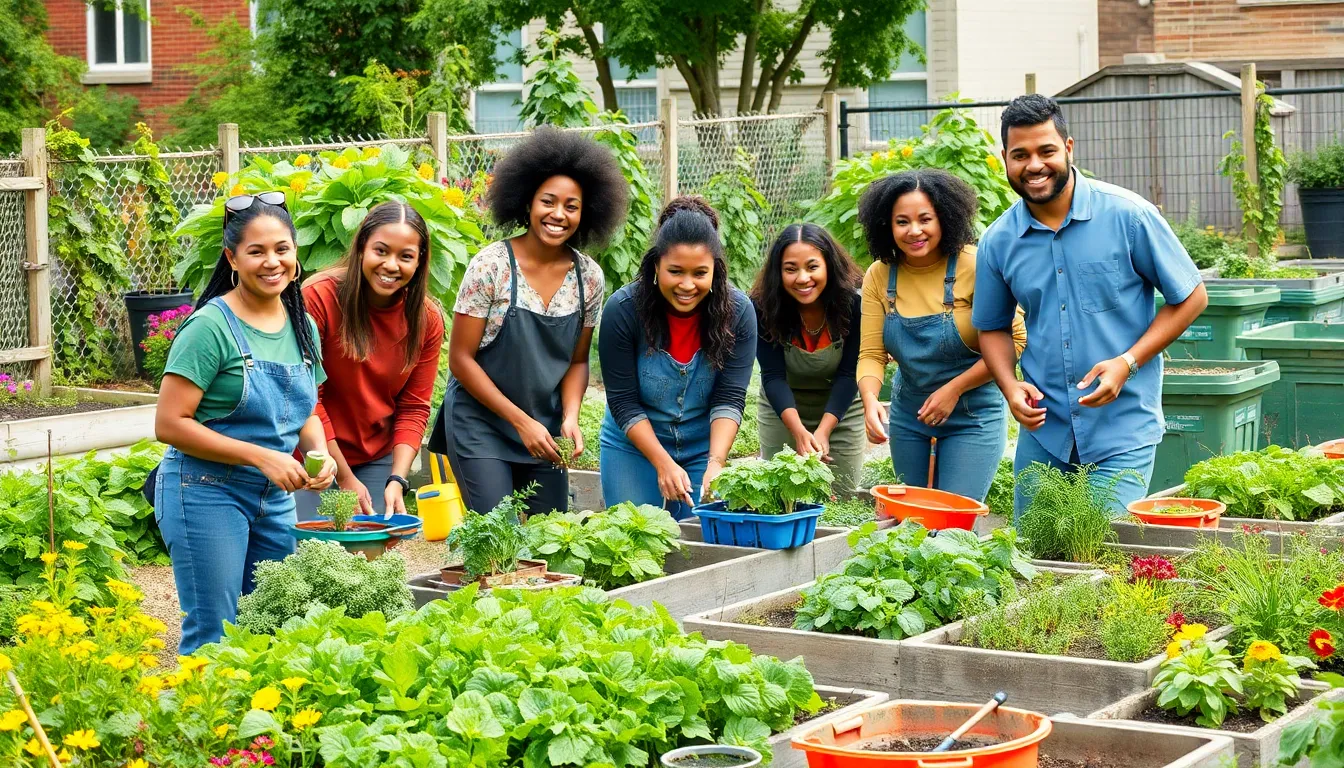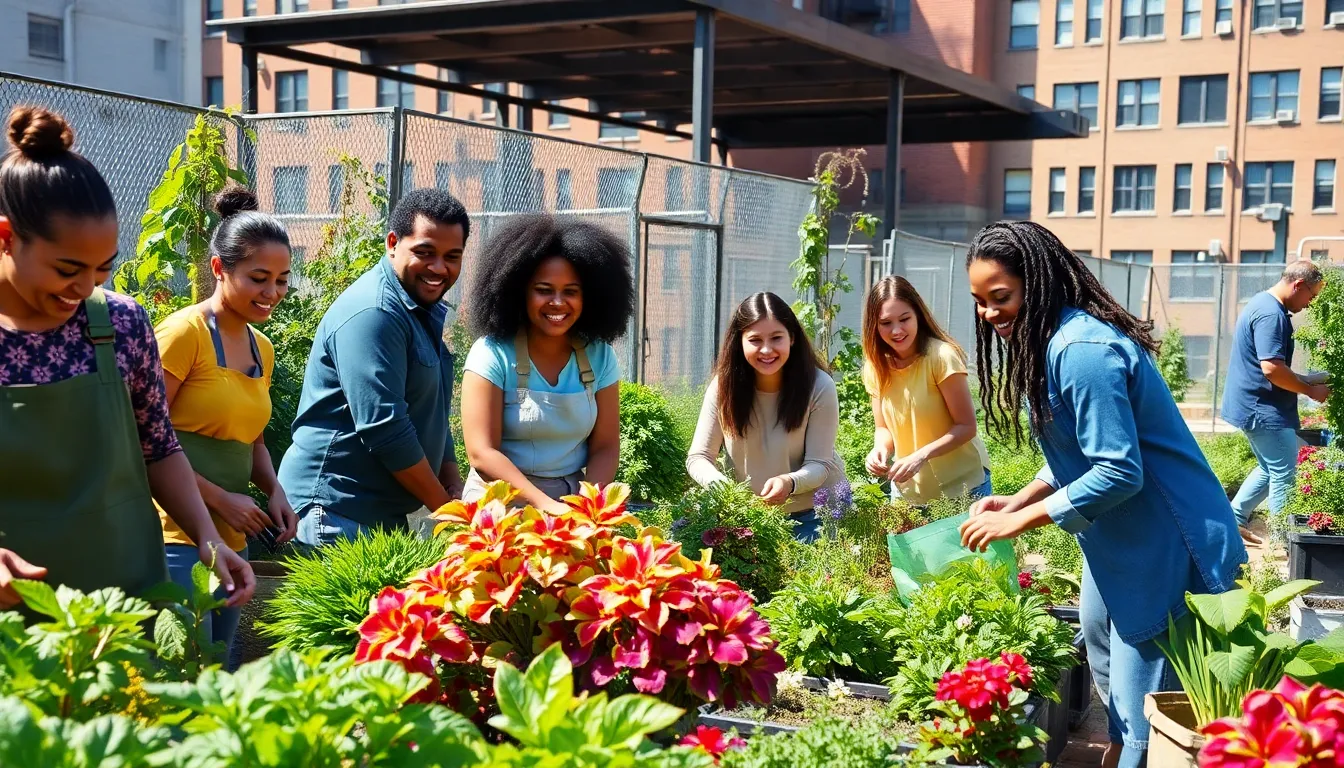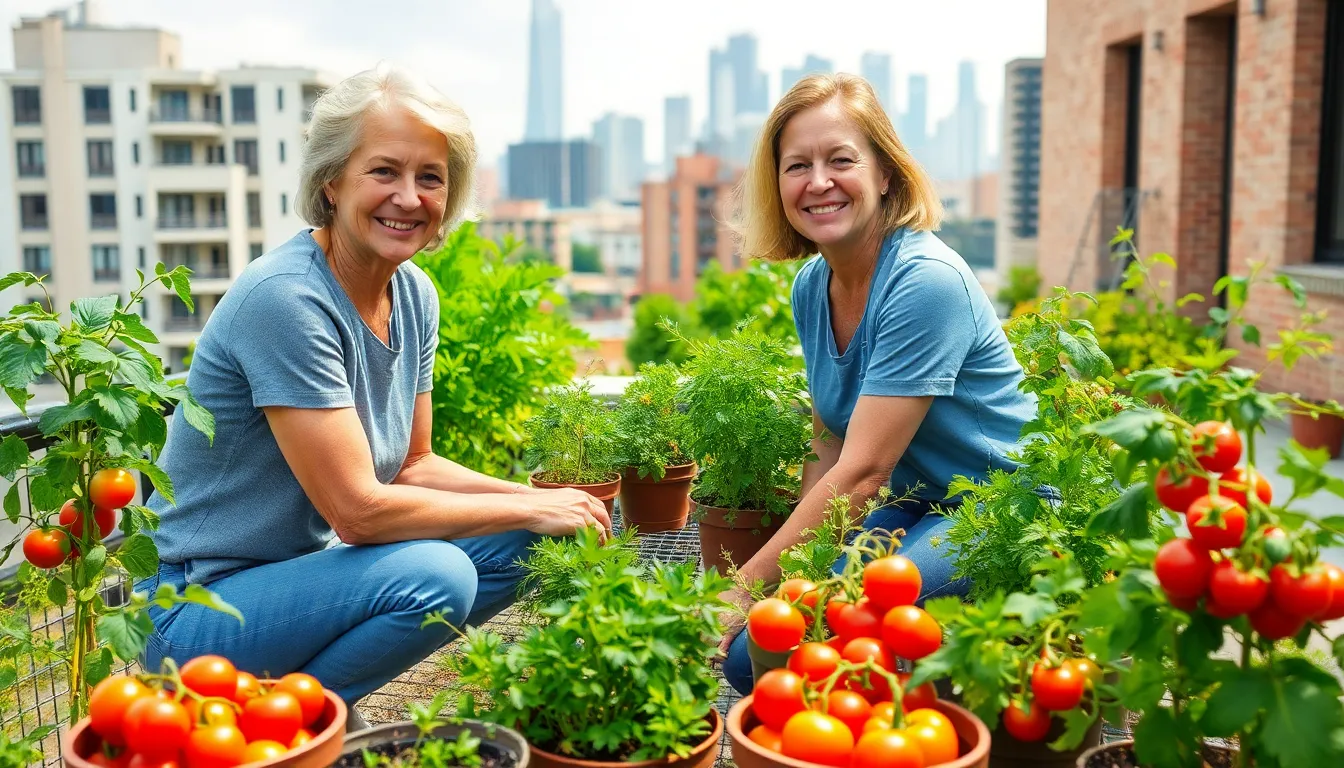In a world where concrete jungles reign supreme, urban gardeners are the unsung heroes transforming bland balconies and rooftops into lush green oases. With a trowel in one hand and a dream in the other, they’re proving that you don’t need a sprawling backyard to cultivate a thriving garden. Who knew that a couple of pots on a fire escape could yield enough tomatoes to make a sauce worthy of an Italian grandmother?
Urban Gardeners
Urban gardeners transform small, often overlooked spaces into thriving green areas. Balconies, rooftops, and windowsills become vibrant extensions of city living. Many individuals successfully grow produce like tomatoes and herbs, even without traditional backyards. This movement reflects a growing awareness of sustainability and food security.
Community gardens flourish in urban areas, providing shared gardening spaces for residents. Neighbors collaborate, sharing resources and knowledge while fostering a sense of community. These gardens not only enhance local ecosystems but also improve neighborhood aesthetics.
In 2021, approximately 25% of urban residents engaged in gardening activities, reflecting a significant shift. More city dwellers embrace gardening as a way to connect with nature. The trend shows that access to green spaces positively impacts mental health and well-being.
Urban gardeners often utilize innovative techniques such as vertical gardening and aquaponics. These methods maximize limited space while promoting sustainable practices. Sustainability attracts many to urban gardening, as they minimize their carbon footprint and reduce food miles.
Local governments increasingly support urban gardening initiatives through funding and education. These efforts encourage the establishment of new gardens, aligning with broader environmental goals. Overall, urban gardening represents a proactive approach to urban living, showcasing creativity and resilience amidst concrete landscapes.
Benefits of Urban Gardening


Urban gardening offers numerous advantages, especially in densely populated areas. This practice fosters a sense of community while contributing to environmental health and personal well-being.
Environmental Impact
Urban gardening plays a crucial role in enhancing local ecosystems. It increases biodiversity by providing habitats for pollinators like bees and butterflies. These green spaces improve air quality by absorbing pollutants and releasing oxygen. Furthermore, gardens can reduce urban heat, making cities more pleasant during hot weather. By utilizing sustainable practices, such as composting and rainwater harvesting, urban gardeners promote resource conservation. Community gardens often transform vacant lots into productive spaces, reducing waste and encouraging responsible land use.
Health Advantages
Engaging in urban gardening significantly benefits mental health. Studies reveal that accessing green spaces lowers stress levels and promotes relaxation. Physical activity involved in gardening also aids cardiovascular health, muscle strength, and flexibility. Urban gardeners often enjoy nutritious produce, which boosts overall diet quality and supports healthier choices. Social interactions within community gardens foster friendships and reduce feelings of isolation. As a result, urban gardening contributes to both physical and emotional well-being, enhancing quality of life in urban settings.
Getting Started as an Urban Gardener
Urban gardening offers city dwellers a chance to cultivate green spaces, regardless of size. Transforming balconies, rooftops, or windowsills can yield fresh produce and promote sustainability.
Choosing the Right Space
Selecting the ideal location is crucial for urban gardening success. Balconies can provide sunlight and accessibility, while rooftops often allow for larger plant varieties. Windowsills work well for small herbs and flowers that need minimal attention. Evaluating sunlight exposure is vital, as many plants thrive in at least six hours of direct sunlight each day. Consider factors like wind exposure and protection from harsh weather, as these will influence plant growth. Accessibility is essential for maintenance and harvesting, so picking a spot that invites regular attention leads to better yields.
Essential Tools and Supplies
Urban gardeners should acquire specific tools to facilitate their gardening activities. Essential items include hand tools like trowels, pruners, and gloves to ensure comfort and efficiency. Containers offer flexibility in planting; options like pots and raised beds can suit various spaces. Quality potting soil supports healthy plant growth and promotes drainage. Seed varieties should match the growing environment, such as tomatoes for sunny spots or leafy greens for shadier areas. Fertilizers and compost contribute to soil enrichment, enhancing overall plant vigor. Watering tools should also be on the list, whether it’s simple watering cans or drip irrigation systems for convenience.
Types of Urban Gardening
Urban gardening encompasses various styles that adapt to limited spaces while allowing individuals to grow their own food. These techniques maximize yield and improve the urban environment.
Container Gardening
Container gardening enables individuals to cultivate plants in any defined space. Utilizing pots, barrels, or even recycled materials, gardeners can easily grow vegetables, herbs, and flowers. This method suits rooftops and balconies, where traditional soil planting isn’t feasible. Many gardeners prefer containers for their flexibility, allowing for rearranging based on sunlight and aesthetic preferences. Container gardening offers advantages like mobility and the ability to control soil quality effectively. It’s an essential practice for urban dwellers seeking to maximize their gardening potential in limited areas.
Vertical Gardening
Vertical gardening innovatively utilizes vertical surfaces to grow plants. This method involves wall-mounted planters, trellises, or stacked systems. By growing upward, gardeners can save space and transform walls into lush green displays. Many urban gardeners adopt this technique to enhance aesthetic appeal while providing more growing area. Additionally, vertical gardening can improve air circulation around plants, reducing the risk of disease. It also contributes to better insulation in buildings by regulating temperature swings. Overall, vertical gardening represents a creative solution to urban gardening challenges, making the most of every available inch.
Challenges Faced by Urban Gardeners
Urban gardeners face several challenges that can impact their gardening efforts. Adapting to these obstacles is essential for success.
Limited Space
Limited space presents a significant hurdle for urban gardeners. Small balconies, rooftops, and windowsills often restrict planting options. Solutions like vertical gardening and container gardening help maximize space. Vertical gardening allows plants to grow upwards, utilizing walls or trellises. Container gardening enables growth in pots, providing flexibility for various locations. Many urban gardeners use innovative designs to create functional and visually appealing green areas. According to recent studies, over 30% of urban gardeners report struggling with space constraints. Finding creative solutions promotes successful gardening despite these limitations.
Soil Quality Issues
Soil quality frequently poses challenges for urban gardeners. Contaminated or poor soil can hinder plant health and growth. Many urban areas have soil that lacks essential nutrients or contains pollutants. As a result, urban gardeners often opt for raised beds or high-quality potting mixes to ensure nutrient availability. Testing soil for contaminants becomes a vital practice to guarantee safety and quality. A significant number of gardeners invest in soil amendments like compost to improve soil health. Inadequate soil quality ranked among the top concerns for around 40% of urban gardeners. Addressing these quality issues supports robust plant development and a thriving garden.

